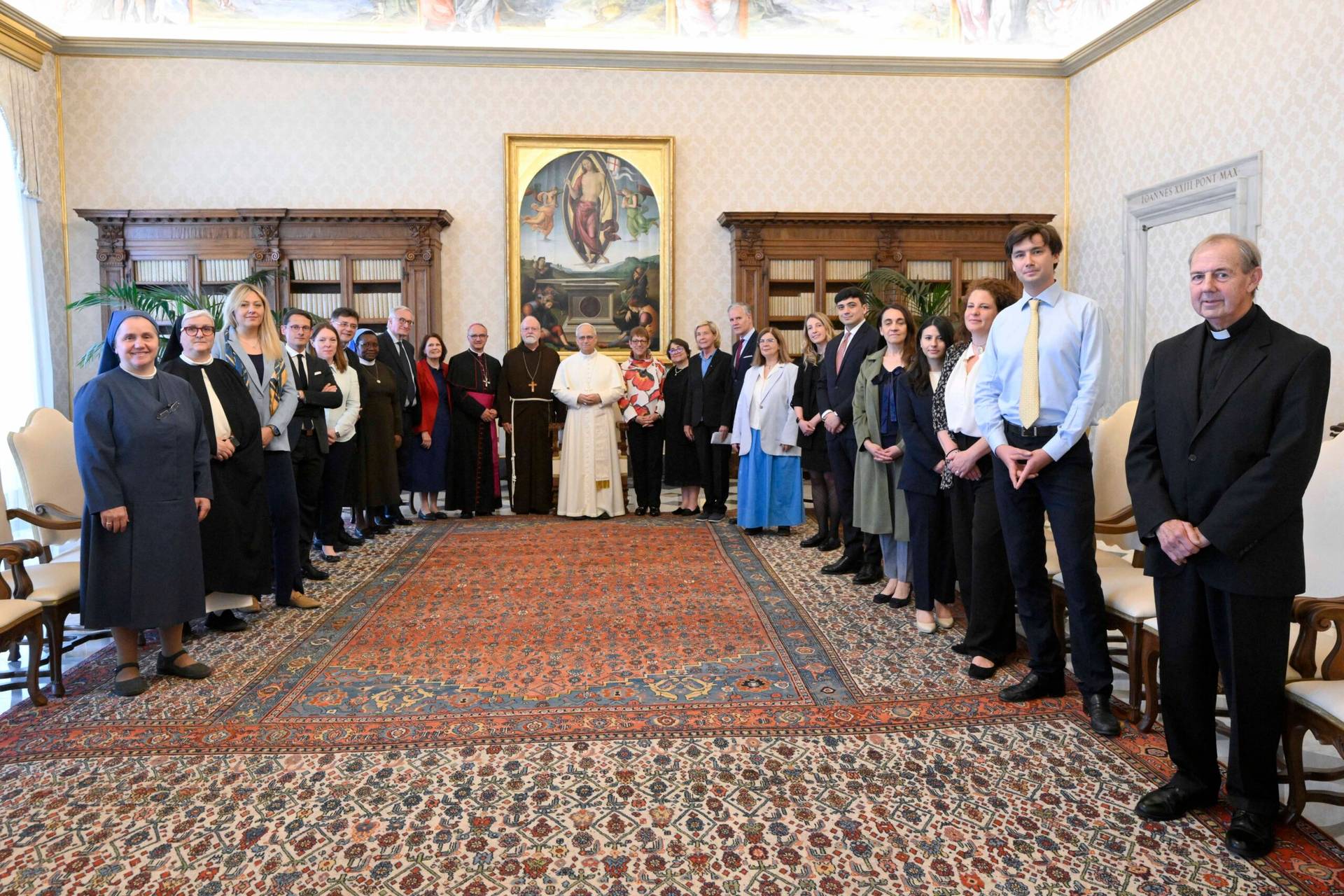ROME – When Ronald Reagan launched full diplomatic relations between the U.S. and the Vatican 35 years ago, his idea, which proved correct, was that Pope John Paul II would be a reliable ally against Communism. John Paul nevertheless needled the Americans on other fronts, and ever since the relationship between the world’s preeminent hard and soft powers always has been a mixed bag.
Right now, it might be hard to imagine any greater contrast between a pope and a president than Francis and Donald Trump – one the pope of immigrants, the other an advocate of border walls; one a critic of an “economy that kills,” the other an avatar of free market capitalism; one the chaplain of the fight against climate change, the other the contrarian who pulled the U.S. out of the Paris accords. On top of all that, Pope Francis has made no secret of his personal ambivalence about America and Americans, recently quipping that he considers it an honor “when Americans are attacking me.”
Yet the truth of it is, both the U.S. and the Vatican have powerful motives for keeping their relationship green despite those obvious tensions, because both parties perceive they need the other.
The Vatican wants to be a serious global player and needs the leverage the Americans can bring, while no American president can afford to write off an institution that claims one-sixth of humanity as its membership, not to mention one-quarter of the voting age population of that president’s own country.
All of which brings us to a remarkable event that unfolded on Wednesday in the Vatican, co-sponsored by the Vatican’s Secretariat of State and the U.S. Embassy to the Holy See titled “Pathways to Dignity.” The idea was to focus on three areas where the U.S. and the Vatican, even in the era of Francis and Trump, more or less see eye-to-eye: Religious freedom, the fight against human trafficking, and humanitarian assistance.
In a sign of how seriously the U.S. took the moment, Secretary of State Mike Pompeo showed up to deliver an opening address, and Ambassador at Large for International Religious Freedom Sam Brownback was there to headline the opening panel. Probably the reason I was asked to moderate the opening panel is that, like Pompeo and Brownback, I’m from Kansas, so it was sort of an all-Sunflower State lineup.
U.S. Ambassador to the Holy See Callista Gingrich gave the welcome, and her husband, former House Speaker Newt Gingrich, was in the front row.
The day’s opening act was dedicated to the issue of religious freedom. It also included Monsignor Indunil Kodithuwakku of Sri Lanka, the number two official of the Vatican’s Pontifical Council for Interreligious Dialogue, and Dr. Nayla Tabbara of Lebanon’s Adyan Foundation and a Muslim scholar who, among other things, has written on Islamic feminism.
Four basic take-aways suggest themselves.
First, each speaker outlined resources in the press for greater religious freedom. Brownback discussed American political ideals, above all personal freedom, while Kodithuwakku sketched Catholic thought on religious freedom as presented by the Second Vatican Council (1962-65) in its towering documents Nostra Aetate and Dignitatis Humanae. Tabbara, meanwhile, discussed more recent documents and declarations to emerge both from Islamic religious authorities and in Islamic civil society.
Adding it all up, the impression is that there are more tools in the toolbox than one might imagine.
Second, the three speakers made the point in various ways that there’s a history behind today’s ferment over religious freedom. Brownback, for instance, talked about the nexus between John Paul II and Reagan – “one wearing a miter, the other a cowboy hat” – while Kodithuwakku recalled John Paul’s pioneering decision to host an inter-faith summit in Assisi in 1986, which had the effect of making outreach to other faiths part of the job description for Catholic leaders at all levels.
Third, the panel was a reminder of the global complexities of the religious freedom debate, and the importance of taking cultural sensitivities into account. Tabbara, for example, said that in the Middle East, the terms “freedom of religion” and “secularism” can both come off as Western concepts laden with negative associations, so the foundation with which she works has found it easier to talk about “freedom of belief” and “inclusive citizenship.”
Fourth, and most basically, each speaker projected a spirit of optimism about the prospects for religious freedom, despite a number of trendlines that might counsel despair – the rise of nationalist and populist regimes in various parts of the world predicated on fairly hardline versions of religious identity, for instance, and a spike in radicalism in all the world’s major faiths, including Hinduism in India, Buddhism in Myanmar, and Islam in various venues.
Yet Brownback nevertheless offered a battle cry with the line, “Tear down the wall of religious oppression!”, suggesting that achieving it is actually possible. Kodithuwakku and Tabbara were obviously proud of developments with Catholicism and Islam respectively, and clearly felt that it’s only a matter of time before a dialogical and tolerant form of each faith gains the upper hand.
To be sure, there weren’t many practical new ideas to surface at Wednesday’s event, nor were there many hard questions that might reasonably have been asked of both the U.S. and the Vatican – whether the cozy relationship the U.S. enjoys with Saudi Arabia, for instance, compromises its ability to challenge the Saudis about injustices at home and support for extremism abroad, or whether the Vatican’s recent deal with China actually has made the prospects for religious freedom worse rather than better.
Nevertheless, the mere fact that leading lights of both Francis’s Vatican and Trump’s America could pool resources around the defense of religious freedom suggests the breadth of a potential coalition – suggesting that this 35-year-old relationship, even now, still packs a punch.


















